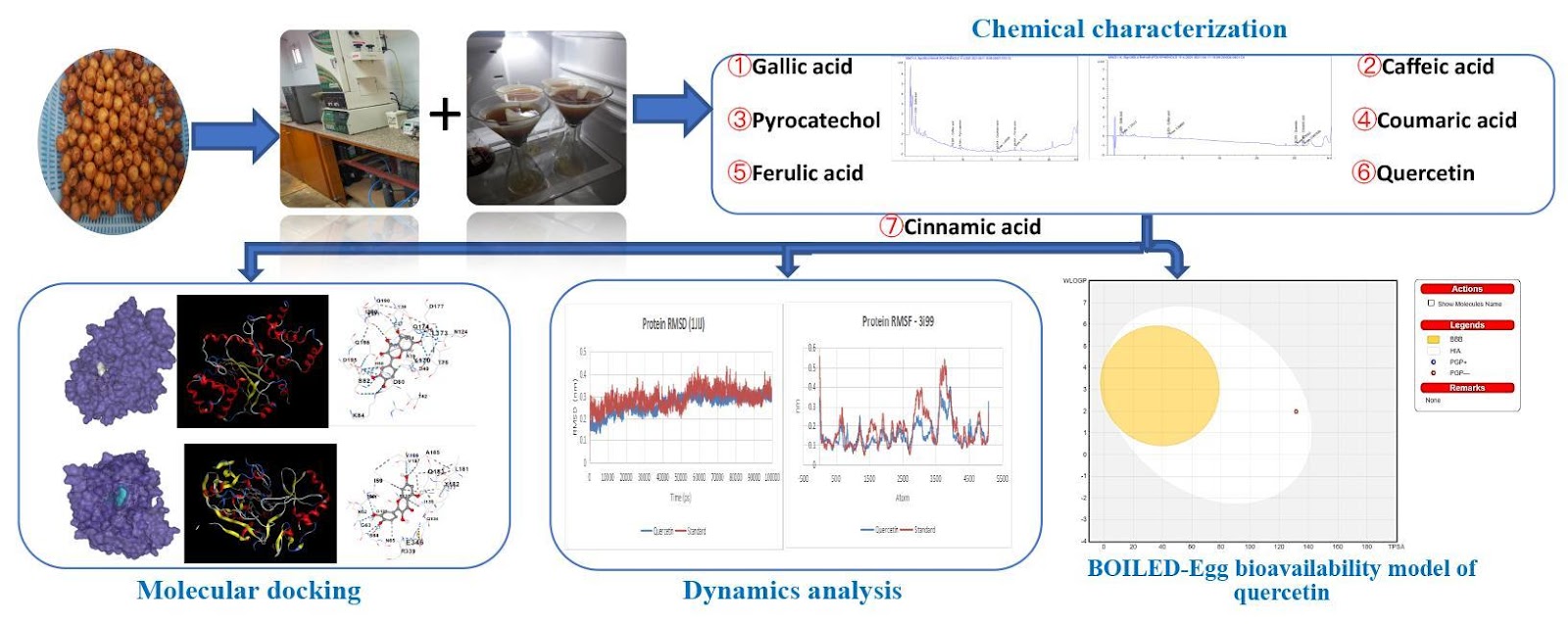Computational study of antiviral, anti-bacterial, and anticancer activity of green-extracted Sidr (Ziziphus spina-Christi) fruit phenolics
DOI:
https://doi.org/10.31989/bchd.v6i10.1192Abstrakt
Background: Hepatitis may result in inflammation, swelling, cirrhosis, cancer, and failure. Food-born bacteria like Escherichia coli, Staphylococcus aureus, Vibrio cholera, and Helicobacter pylori have widely developed antibiotic resistance in recent years. The latter is a common hazardous pathogen that may lead to stomach vacuoles and gastric cancer. Despite the toxicity, medication resistance, and/ or financial burdens of conventional cancer medicines, most breast cancer patients globally develop recurrence or relapse distant metastases in many other organs after receiving initial common treatment. Such cases need to find solutions that differ from conventional medicines. Plants are an essential source of efficient bioactive compounds that could be utilized in fighting bacterial and viral infections and/or cancer safely. Due to their capability to control many molecular pathways with less harmful effects, the phytochemicals used in complementary medicine have recently attracted more attention. Most of these phytochemicals are members of one of the alkaloids, phenolics, carotenoids, flavonoids, and/ or terpenoids groups. Sidr (Ziziphus spina-Christi (L.) Willd) is a well-known, traditionally used fruit for curing many diseases in the Middle East. Network medicine and AI technologies can rapidly hasten the discovery of new drug alternatives.
Objective: This study aimed to extract phenolic compounds from Sidr via two green chemistry approaches, then to predict the anticancer and the antimicrobial effect of the characterized phytochemicals towards certain microorganisms.
Methods: Sidr fruit powder was extracted via supercritical CO2 and ethanol asco-solvent and the defatted residues were extracted via the hydro-ethanolic ultrasound assisted extraction to obtain a higher yield of phenolic compounds. The phenolic compounds were characterized and computationally studied for their biological activity against different protein targets of hepatitis virus, food- and water-borne pathogenic bacteria, and breast cancer via Molecular docking and Molecular Dynamics. Additionally, ADMET study was performed for the compounds with high Vina score and good dynamics results.
Results: Chemical analysis revealed the presence of seven different phenolic compounds (Gallic acid, caffeic acid, Pyrocatechol, Coumaric acid, Ferulic acid, Quercetin, and Cinnamic acid). By the results obtained from molecular docking phytochemical Quercetin showed good binding scores and interactions with S. aureus tyrosyl-tRNA synthetase (1JIJ), V. cholera UDP-N-acetylenolpyruvoylglucosamine reductase (3I99), Human topoisomerase Ⅱ beta (3QX3) and H. pylori shikimate kinase (3N2E) with Vina scores equal -9.9, -9.4, -9.3 and -8.5 respectively. ADMET analysis showed that Quercetin obeyed Lipinski's rule and had high GI absorbance, no BBB, and low toxicity within limits. Molecular dynamics studies revealed that V. cholera (3I99), Human topoisomerase Ⅱ beta (3QX3), and H. pylori shikimate kinase (3N2E) proteins don't show effective stabilities, and more fluctuations were observed. Quercetin with S. aureus tyrosyl-tRNA synthetase (1JIJ) showed good stability and formed a stable complex with good RMSD and RMSF.
Conclusion: Based on the results obtained, the compound Quercetin can be a potent molecule to treat bacterial infections related to the antibiotic-resistant Staphylococcus aureus. Sidr (Ziziphus spina-Christi (L.) Willd) is a widely consumed fruit worldwide and it has been used in traditional medicine since ancient times, so using this plant’s extracts may be a potent anti-bacterial treatment. These results need further in vitro and in vivo studies in the future to prove their accuracy.

Opublikowane
Numer
Dział
Licencja
Any manuscripts or substantial parts of it, submitted to the journal must not be under consideration by or previously published in any other journal or citable form. Authors are required to ensure that no material submitted as part of a manuscript infringes existing copyrights or the rights of a third party. In submitting one's article in any form, the author has assigned the FFC publishing rights and has agreed to an automatic transfer of the copyright to the publisher. This is so that the FFC may create print option journals, for example, at the FFC’s discretion. If the author wishes to distribute their works by means outside of the FFC, for example within their community, they will have to place a request.
Correspondence concerning articles published in Functional Foods in Health and Disease is encouraged. While derivative works (adaptations, extensions on the current work, etc.) are allowed, distribution of the modified material is not allowed without permission from the FFC.